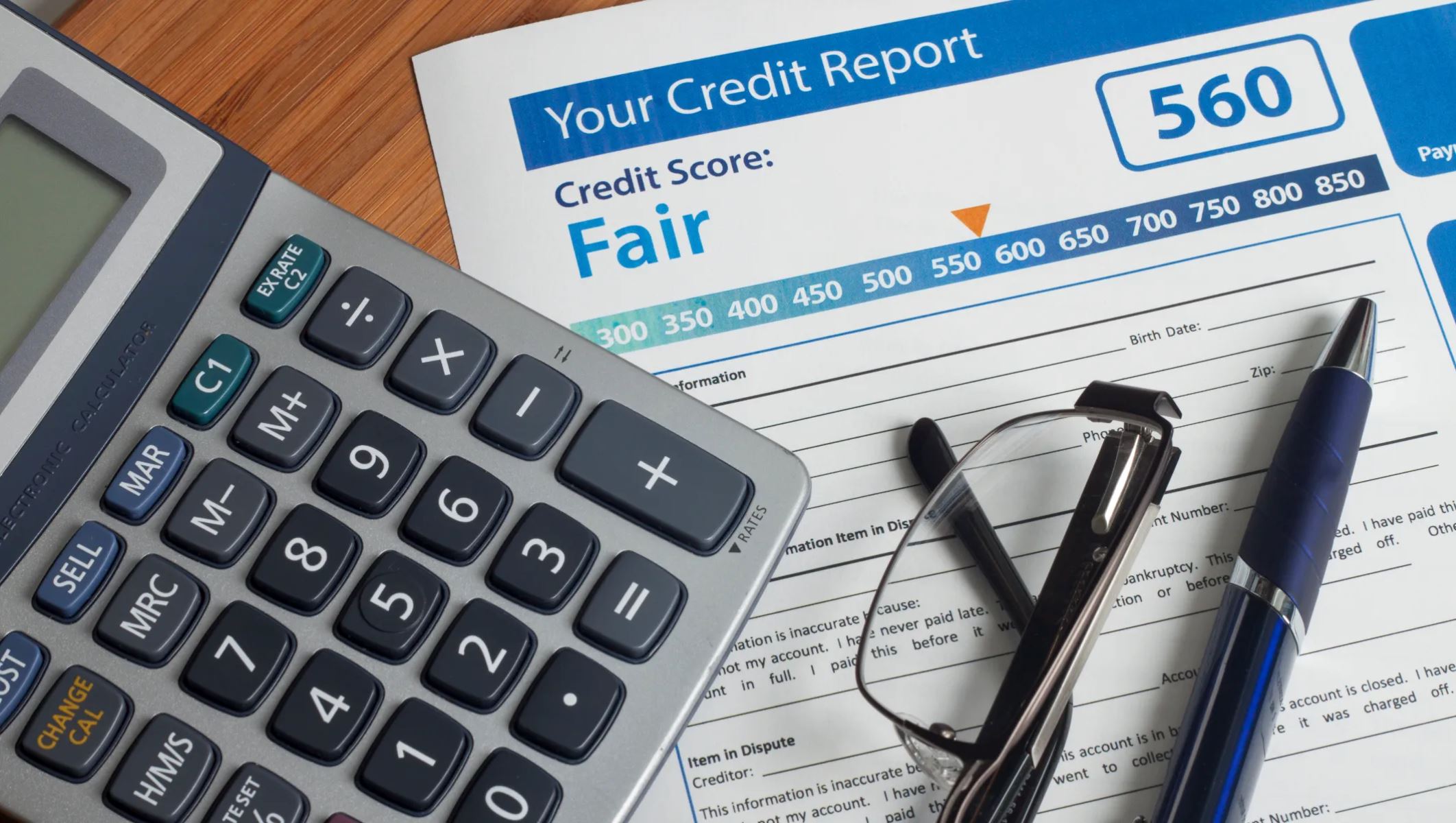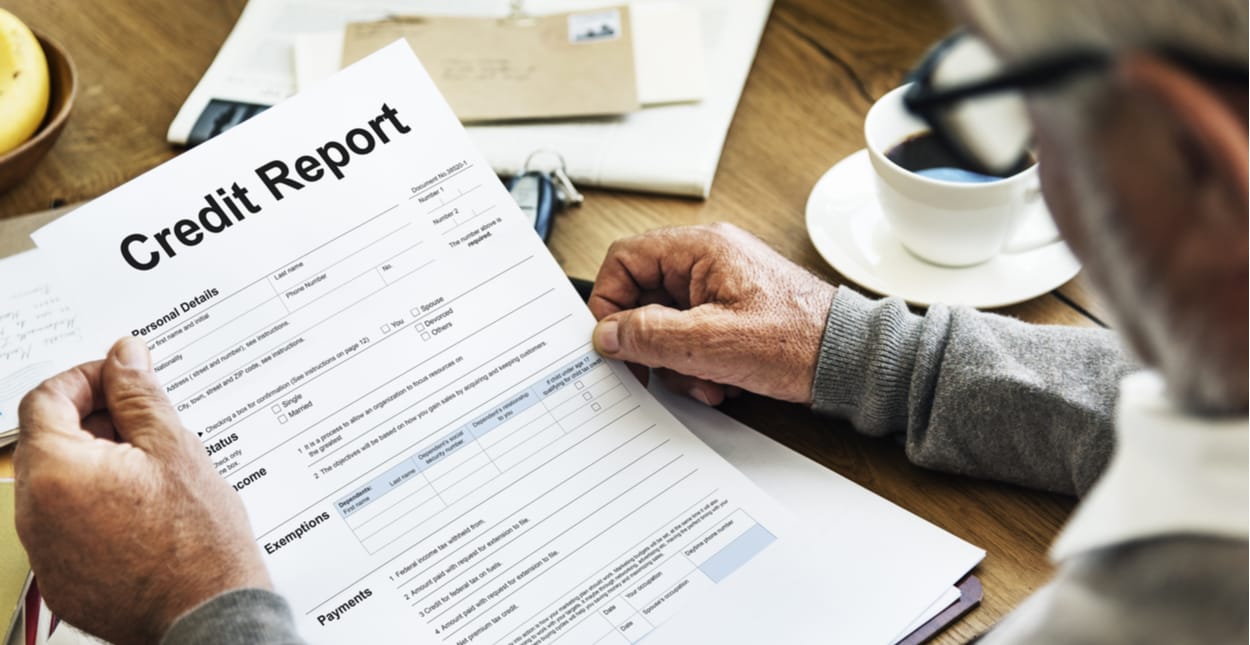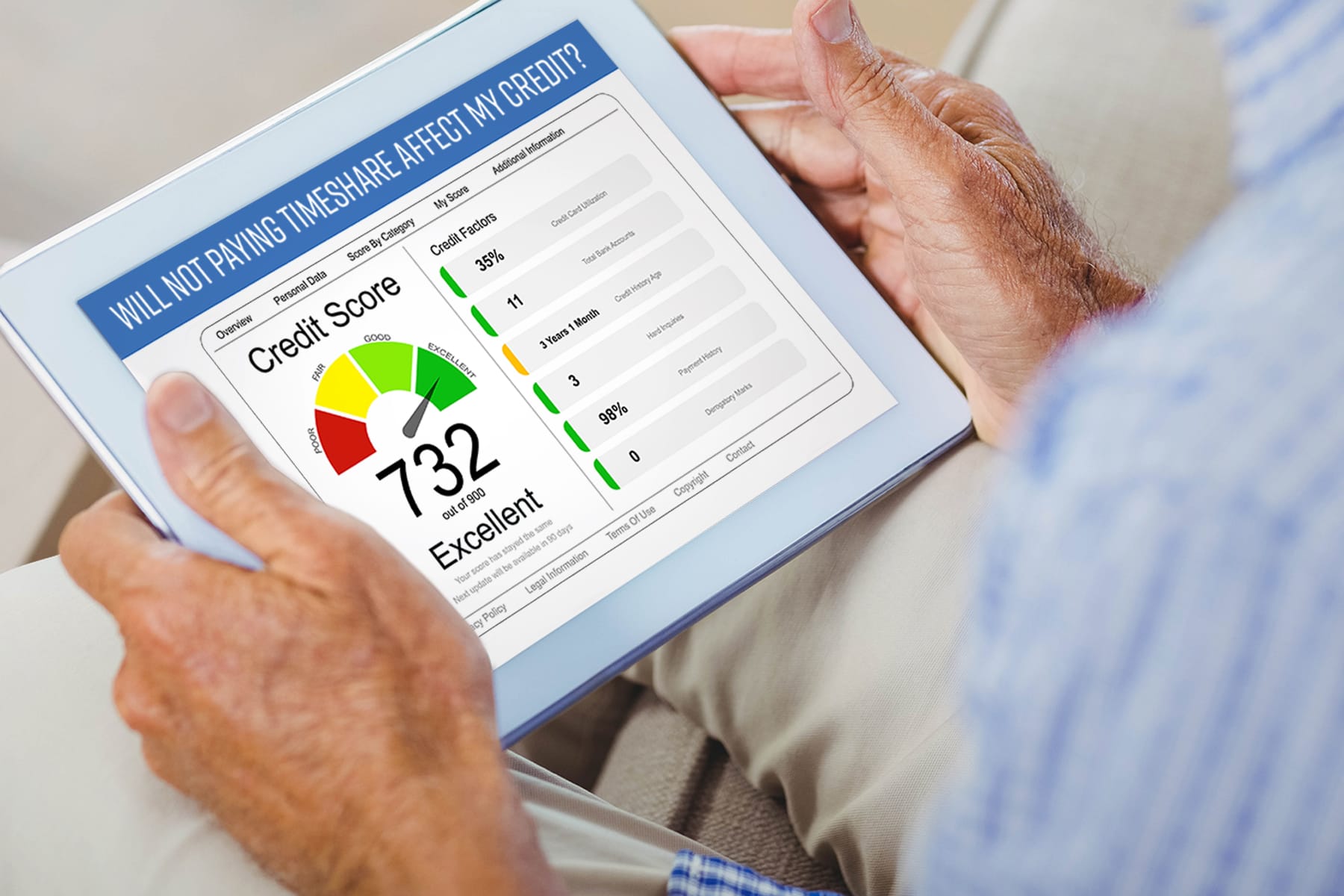Home>Finance>How To Get Student Loan Removed From Credit Report


Finance
How To Get Student Loan Removed From Credit Report
Modified: March 1, 2024
Learn how to remove student loans from your credit report and improve your finances. Find out the best strategies to get rid of student loan debt and improve your credit score.
(Many of the links in this article redirect to a specific reviewed product. Your purchase of these products through affiliate links helps to generate commission for LiveWell, at no extra cost. Learn more)
Table of Contents
- Introduction
- Understanding Student Loans and Credit Reports
- Checking for Errors and Inaccuracies
- Disputing Incorrect Student Loan Listings
- Negotiating with Lenders for Removal
- Seeking Assistance from a Credit Repair Company
- Utilizing Student Loan Rehabilitation Programs
- Consolidating or Refinancing Student Loans
- Seeking Legal Help for Extreme Cases
- Maintaining Good Credit Habits and Building Positive History
- Conclusion
Introduction
Student loans have been a popular means to finance higher education for millions of students. However, struggling to repay these loans can have a significant impact on a person’s credit score. Late or missed payments, defaults, and even delinquencies can all contribute to a poor credit report, making it difficult to secure future loans, mortgages, or even employment opportunities.
Having a student loan listed on your credit report can be a source of stress and anxiety. However, it’s important to remember that there are steps you can take to remove this negative item from your credit report. In this article, we’ll explore various strategies and options to help you get a student loan removed from your credit report.
Before diving into the strategies, it’s important to understand how student loans impact your credit report. Student loans are typically listed under the installment loan category, which includes fixed monthly payments over a specified period. The payment history, payment amounts, and lengths of your student loans all factor into your credit score. Negative information, such as late payments or defaulting on your loan, can significantly lower your credit score.
While it may seem daunting, there are several ways you can improve your credit report and work towards removing a student loan listing. The key is to take proactive measures and be persistent in your efforts. By following the strategies outlined in this article, you’ll be well on your way to improving your creditworthiness and achieving a favorable credit report.
Understanding Student Loans and Credit Reports
Before delving into the steps of removing a student loan from your credit report, it’s important to understand how student loans and credit reports are interconnected. Student loans are considered a type of installment loan, which means you borrow a fixed amount of money and repay it in regular monthly installments over a set period of time.
When you take out a student loan, the lender reports the loan details, such as the loan amount, payment history, and any delinquencies or defaults, to the three major credit bureaus: Equifax, Experian, and TransUnion. These credit bureaus compile this information and use it to calculate your credit score, which is a numerical representation of your creditworthiness.
Any negative information related to your student loans, such as late payments or defaults, can have a significant impact on your credit score. This can make it harder to access new credit or secure favorable interest rates on loans and mortgages.
It’s important to regularly check your credit report to ensure the accuracy of the information being reported by the credit bureaus. You are entitled to one free annual credit report from each of the three major credit bureaus, which you can request through AnnualCreditReport.com. Reviewing your credit report allows you to identify any errors or inaccuracies, including student loans that may have been incorrectly reported.
If you find any discrepancies or errors in your credit report, it’s crucial to address them promptly. Incorrectly reported student loans can negatively impact your credit score and financial well-being. By taking the necessary steps to correct these errors, you can potentially improve your credit profile and increase your chances of having the student loan removed from your credit report entirely.
Checking for Errors and Inaccuracies
When it comes to getting a student loan removed from your credit report, the first step is to thoroughly examine your credit report for any errors or inaccuracies. This can help identify any discrepancies related to your student loan that may be impacting your credit score negatively.
Start by obtaining a copy of your credit report from each of the three major credit bureaus: Equifax, Experian, and TransUnion. You can request a free copy of your credit report once a year from each bureau through AnnualCreditReport.com. Carefully review each report and look for any inconsistencies or misreported information.
Pay close attention to the following details:
- The accurate reporting of your student loan balance
- The correct loan servicer or lender associated with your student loan
- The accurate record of your payment history (including missed or late payments, if applicable)
- Any duplicates or multiple entries for the same student loan
- Incorrect dates of loan origination or repayment
- Any loans mistakenly attributed to you
If you come across any errors or inaccuracies, gather supporting documentation to substantiate your claim. This may include payment receipts, loan statements, or any correspondence with your loan servicer. Once you have gathered the necessary evidence, you can proceed with disputing the inaccurate information with the respective credit bureaus.
Reach out to each credit bureau individually and provide them with a detailed explanation of the error, along with the supporting documentation. The credit bureau then has a legal obligation to investigate and correct any inaccuracies within 30 days under the Fair Credit Reporting Act.
Keep meticulous records of your communication with the credit bureaus and maintain copies of all correspondence. This will help you keep track of your progress and ensure that the necessary adjustments are made to your credit report.
By identifying and rectifying any errors or inaccurately reported information, you can potentially improve your credit score and work towards removing the student loan from your credit report entirely.
Disputing Incorrect Student Loan Listings
If you have identified incorrect or inaccurate information related to your student loan on your credit report, the next step is to dispute these listings with the credit bureaus. Disputing incorrect student loan listings can be an effective way to remove them from your credit report and improve your overall credit standing.
Here’s how to effectively dispute incorrect student loan listings:
- Submit a written dispute: Draft a formal dispute letter to the credit bureau(s) that are reporting the incorrect student loan information. Clearly outline the inaccuracies and provide supporting documentation that proves the error. Include copies (not originals) of any relevant documents, such as loan statements, payment receipts, or correspondence with the loan servicer.
- Follow the credit bureau’s instructions: Review the instructions provided by the credit bureau on their website or in their response to your dispute. They may require specific documentation or forms to be filled out. Follow their guidelines carefully to ensure that your dispute is considered promptly.
- Provide a clear explanation: Clearly state why you believe the information is inaccurate or misleading. Be concise and factual in your explanation, focusing on the specific error and providing evidence to support your claim. Avoid emotional language and stick to the facts to strengthen your case.
- Keep records and follow up: Maintain thorough records of your dispute, including copies of letters and any supporting documentation. Keep track of the dates you submitted the dispute and follow up regularly to check on the status of your dispute. The credit bureau is required to investigate within 30 days and provide you with a response.
- Review the results: Once the credit bureau completes their investigation, they will send you a response letter detailing their findings. If the incorrect student loan listing is deleted or corrected, be sure to review your updated credit report to ensure the changes have been made.
If the credit bureau does not take appropriate action to correct the inaccuracies, you may need to escalate your dispute. Consider filing a complaint with the Consumer Financial Protection Bureau (CFPB) or seeking legal assistance to help resolve the issue.
Remember, disputing incorrect student loan listings can be a lengthy process, but persistence can yield positive results. By taking the necessary steps and providing supporting documentation, you increase your chances of having the inaccurate student loan information removed from your credit report.
Negotiating with Lenders for Removal
Another strategy to consider when trying to get a student loan removed from your credit report is to negotiate directly with the lender or loan servicer. While it may not always be successful, discussing your situation and exploring options with the lender can sometimes lead to a positive outcome.
Here are some steps to effectively negotiate with lenders for the removal of a student loan from your credit report:
- Gather relevant information: Before reaching out to your lender, gather all the necessary documentation regarding your student loan. This may include loan statements, payment history, and any communication records you have with the lender.
- Prepare your case: Develop a strong case as to why the loan should be removed from your credit report. If you have made payments on time or have successfully rehabilitated the loan, emphasize these positive aspects. If you have encountered financial hardships that led to late payments or defaults, explain the circumstances and demonstrate how you have overcome them.
- Contact the lender or loan servicer: Reach out to the lender or loan servicer either through phone or email. Explain your situation and express your desire to have the student loan removed from your credit report. Provide a concise summary of your case and ask if they have any policies or options in place for removing or updating credit reporting information.
- Be persistent and patient: Lenders may not always be willing to remove the student loan from your credit report, but don’t give up easily. Be persistent in your communication and request to speak with a supervisor or someone with authority to make decisions regarding credit reporting. Be prepared for multiple conversations or follow-ups.
- Get any agreements in writing: If you are successful in negotiating with the lender, make sure to obtain any agreements in writing. This ensures that the lender follows through on their commitment to remove the student loan from your credit report. Keep copies of all correspondences and written agreements for your records.
Remember, not all lenders may be willing to remove the student loan from your credit report, but it’s worth the effort to explore this option. By explaining your situation and demonstrating your financial responsibility, you might be able to reach a mutually beneficial agreement that improves your credit report.
Seeking Assistance from a Credit Repair Company
If you’re facing difficulty in removing a student loan from your credit report on your own, another option to consider is seeking assistance from a reputable credit repair company. These companies specialize in helping individuals improve their credit profiles, including removing inaccurate or negative information from credit reports.
Here are some key points to consider when seeking assistance from a credit repair company:
- Research and choose a reputable company: Take the time to research and choose a reputable credit repair company. Look for companies with a solid track record, positive customer reviews, and transparent pricing structures. Avoid companies that make false promises or charge exorbitant fees upfront.
- Consultation and analysis: Once you’ve identified a credit repair company, schedule a consultation to discuss your specific situation. They will review your credit report, analyze the student loan listings, and provide a tailored plan of action.
- Dispute process: Credit repair companies have experience in navigating the dispute process with credit bureaus. They will submit formal disputes on your behalf, followed by thorough follow-ups and documentation to support your case.
- Communication with lenders and loan servicers: Credit repair companies can also handle communication with the lenders or loan servicers associated with the student loan. They may negotiate on your behalf for the removal of the loan from your credit report.
- Regular progress updates: A reputable credit repair company will provide regular updates on the progress they are making in removing the student loan from your credit report. This will keep you informed and give you peace of mind knowing that the process is being handled professionally.
- Costs and potential outcomes: It’s essential to understand the costs involved in working with a credit repair company. Additionally, keep in mind that there is no guarantee that they will be able to remove the student loan from your credit report. However, their expertise and guidance can greatly increase your chances of success.
Note that while credit repair companies can be a valuable resource, it’s essential to remain vigilant and involved throughout the process. Stay informed about the steps being taken and keep track of any communications or changes made to your credit report.
Ultimately, seeking assistance from a credit repair company can be a viable option for those struggling to remove a student loan from their credit report. The expertise and specialized knowledge they bring to the table can significantly improve your chances of achieving a favorable outcome.
Utilizing Student Loan Rehabilitation Programs
If you’re struggling with a defaulted student loan and are unable to make the necessary payments, a student loan rehabilitation program can be a viable option to not only rehabilitate your loan but also potentially remove the negative listing from your credit report.
Here’s what you need to know about utilizing student loan rehabilitation programs:
A student loan rehabilitation program is typically offered by the loan servicer or the Department of Education. It allows borrowers to make a series of consistent, on-time monthly payments to bring their defaulted loan back into good standing.
- Contact your loan servicer: Start by contacting your loan servicer to inquire about their student loan rehabilitation program. They will guide you through the process and provide the necessary information.
- Payment arrangements: Work with your loan servicer to establish an affordable monthly payment amount based on your income and financial situation. These payments should be made consistently for a specified period, usually nine consecutive months.
- Completion requirements: Ensure that you meet all the requirements of the rehabilitation program, including making the agreed-upon monthly payments on time. It’s crucial to adhere to the program guidelines to successfully complete the rehabilitation process.
- Loan rehabilitation benefits: Successfully completing the rehabilitation program offers several benefits. Firstly, it brings your defaulted loan back into good standing, which means you regain eligibility for federal student aid programs. Additionally, once the rehabilitation program is completed, the student loan default listing can be removed from your credit report, improving your credit profile.
- Stay in communication: Maintain open communication with your loan servicer throughout the rehabilitation process. If you encounter any financial hardships that may impact your ability to make the agreed-upon payments, contact your loan servicer immediately to discuss potential alternatives or adjustments.
Keep in mind that student loan rehabilitation programs are typically only available for federal student loans. If you have private student loans, reach out to your lender or loan servicer to explore any rehabilitation or repayment options they may offer.
Utilizing a student loan rehabilitation program can not only help you regain financial stability but also provide an opportunity to remove the negative student loan listing from your credit report. It’s an excellent option for those looking to rebuild their credit profile and improve their overall financial standing.
Consolidating or Refinancing Student Loans
If you have multiple student loans with varying interest rates and monthly payments, consolidating or refinancing your student loans can be a strategic move to simplify your repayment process and potentially improve your credit report.
Here’s what you need to know about consolidating or refinancing student loans:
1. Loan consolidation: Student loan consolidation involves combining multiple federal student loans into a single loan, resulting in one monthly payment. This consolidation is done through a Direct Consolidation Loan from the Department of Education. Consolidating your loans can streamline your repayment process, making it easier to manage and potentially reducing the risk of missed or late payments.
2. Refinancing: Refinancing involves taking out a new loan, often from a private lender, to pay off your existing student loans. The new loan typically comes with a different interest rate, repayment term, and possibly different payment terms. Refinancing can potentially lead to lower interest rates, saving you money in the long run and simplifying your repayment process.
3. Benefits of consolidation or refinancing: Consolidating or refinancing your student loans can have several benefits. Firstly, it can simplify your repayment process by combining multiple loans into one, reducing the risk of missed or late payments. Secondly, if you’re able to secure a lower interest rate through refinancing, it can save you money over the life of the loan. Lastly, by consistently making on-time payments on your consolidated or refinanced loan, you can positively impact your credit report and improve your credit score.
4. Considerations before consolidation or refinancing: Before proceeding with consolidation or refinancing, it’s important to carefully consider the terms and conditions of the new loan. Evaluate the interest rate, repayment term, and any other fees or penalties associated with the loan. Additionally, if you have federal loans, be aware that consolidating them into a private loan will make you ineligible for federal loan benefits such as income-driven repayment plans or loan forgiveness programs.
5. Research and compare options: It’s important to research and compare different consolidation or refinancing options before making a decision. Shop around and obtain quotes from multiple lenders to find the best terms and interest rates that suit your financial goals and needs.
Consolidating or refinancing your student loans can be a strategic financial move, providing you with a simplified repayment process and potentially improving your credit report. However, it’s essential to weigh the pros and cons and carefully consider your individual financial situation before making a decision.
Seeking Legal Help for Extreme Cases
In certain extreme cases, removing a student loan from your credit report may require seeking legal assistance. While this step should be considered as a last resort, it can be a necessary option if you have exhausted all other avenues and are facing significant challenges with your student loan.
Here’s what you need to know about seeking legal help for extreme cases:
1. Consult with a consumer rights attorney: Start by consulting with a consumer rights attorney who specializes in credit reporting and student loan issues. They will assess your situation and provide guidance on whether you have a valid legal case to pursue.
2. Review your rights under the Fair Credit Reporting Act (FCRA): The FCRA protects consumers’ rights regarding the accuracy and privacy of the information on their credit reports. A lawyer can help you understand your rights and determine if there have been any violations by the credit bureaus or lenders.
3. File a lawsuit if necessary: If your attorney determines that you have a valid case, they can help you file a lawsuit against the credit bureaus or the loan servicer to challenge the inaccurate reporting or any violations of your rights. An attorney will guide you through the legal process and represent your interests in court, if needed.
4. Present evidence and build your case: Working with your attorney, gather all relevant evidence to support your case. This may include credit reports, loan statements, correspondence with the loan servicer, and any other documentation that demonstrates the inaccuracies or violations. Your attorney will build a strong case based on this evidence.
5. Negotiate for a resolution: In some cases, legal action may prompt the credit bureaus or loan servicer to negotiate a resolution. This could involve the removal of the student loan from your credit report, correction of inaccuracies, or other favorable outcomes. Your attorney will advocate for your best interests and seek a fair resolution.
6. Be mindful of the costs: It’s important to be aware that legal action can involve fees and expenses. Discuss the costs with your attorney upfront and, if necessary, explore options for legal aid or pro bono services if you are unable to afford an attorney.
Remember, seeking legal help should be considered as a last resort for extreme cases. It’s crucial to consult with an attorney who specializes in credit reporting and student loan issues to determine the best course of action based on your specific circumstances.
Maintaining Good Credit Habits and Building Positive History
While it’s important to explore various strategies to remove a student loan from your credit report, it’s equally crucial to focus on maintaining good credit habits and building a positive credit history. By doing so, you can improve your overall creditworthiness and mitigate the impact of any negative student loan listings on your credit report.
Here are some tips to help you maintain good credit habits and build a positive credit history:
- Pay bills on time: Consistently make all your loan payments and other financial obligations on time. Late payments can severely impact your credit score, so ensure you set up reminders or automatic payments to stay on track.
- Keep credit card balances low: Try to keep your credit card balances below 30% of your credit limit. High credit card utilization can negatively affect your credit score, so aim to pay off your balances in full each month or at least make more than the minimum payment.
- Don’t apply for unnecessary credit: Avoid applying for credit cards or loans unless necessary. Multiple credit inquiries can have a negative impact on your credit score, particularly if they occur within a short period.
- Maintain a diverse credit mix: Having a mix of different types of credit, such as loans and credit cards, can demonstrate that you can handle various types of financial obligations responsibly. However, make sure you only take on credit that you can manage effectively.
- Regularly check your credit report: Monitor your credit report regularly to ensure its accuracy and identify any potential errors or fraudulent activity. You are entitled to one free credit report from each of the three major credit bureaus annually, which you can request through AnnualCreditReport.com.
- Dispute inaccuracies promptly: If you notice any errors or inaccuracies on your credit report, dispute them promptly with the respective credit bureaus. Follow the proper dispute procedure and provide supporting documentation to substantiate your claim.
- Build a positive credit history: Over time, building a positive credit history will outweigh any negative marks on your credit report. Make consistent payments, avoid unnecessary debt, and demonstrate responsible financial habits to improve your creditworthiness.
Remember, building a positive credit history takes time and discipline. By maintaining good credit habits and being proactive in managing your finances, you can gradually improve your credit profile and mitigate the impact of any negative student loan listings on your credit report.
Conclusion
Dealing with a student loan listed on your credit report can be a stressful and challenging situation, but it’s important to remember that there are steps you can take to improve your creditworthiness and potentially remove the negative listing. By understanding the intricacies of student loans and credit reports, checking for errors and inaccuracies, and disputing incorrect information, you can make significant progress in removing the student loan from your credit report.
In some cases, negotiating with lenders or seeking assistance from a credit repair company may be necessary to achieve the desired outcome. Utilizing student loan rehabilitation programs, consolidating or refinancing your loans, or even seeking legal help are options to consider, especially in extreme cases.
While working towards removing the student loan from your credit report, don’t underestimate the significance of maintaining good credit habits and building a positive credit history. Practices such as paying bills on time, keeping credit card balances low, and regularly monitoring your credit report can help improve your overall creditworthiness and mitigate any negative impact from the student loan listing.
Remember, every situation is unique, and there is no one-size-fits-all approach. It’s important to assess your specific circumstances, consult with professionals when needed, and remain determined and patient throughout the process. By taking the necessary steps and staying focused on your financial goals, you can enhance your credit profile and move towards a more secure and stable financial future.














